Congress has recently passed the Senate's version of the $1.2 trillion dollar Infrastructure bill (H.R. 3684 - Infrastructure Investment and Jobs Act) on November 5th. This bill will provide additional funding for infrastructure projects over the course of the next five years. A ton of important information is included in this bill so please use this post as a guide to understand all key aspects of it. Links to each section of this post is provided below.
- Expenditure Breakdown and Analysis
- Historical Trends for Infrastructure Spending
- Risk/Benefit Analysis of the Infrastructure Bill
Expenditure Breakdown and Analysis
There is money within the congressional budget that is allocated specifically towards infrastructure every year. Currently, the U.S. typically spends around $500 - $550 billion dollars on infrastructure annually.
This bill will add $550 billion dollars of additional spending towards the current infrastructure budget. This is important to understand because this bill is commonly referred to as the '$1.2 Trillion Dollar Infrastructure Bill'. This is true, but can be misleading as half of this amount would have been allocated towards infrastructure regardless of the bill passing or not. This bill will also not include any of the 'human infrastructure' initiatives that were proposed by progressives and the Biden administration. H.R. 3684 will strictly focus on conventional infrastructure while president Biden's "Build Back Better" bill will focus on these expanded forms of infrastructure.
The breakdown of the additional spending is as follows.
$110 Billion for Roads, Bridges, and Major Projects
As stated by the White House, “173,000 total miles of our highways and major roads, and 45,000 bridges are in poor condition”. The $110 billion dollars will be used to repair and rebuild these roads and bridges over the course of the next five years. It will also be used to improve critical infrastructure in rural areas that rely on single roads and bridges for transportation, as well as providing congestion relief within major U.S. cities.
$66 Billion for Passenger and Freight Rail Systems
This investment will provide funding for Amtrak and rail maintenance; Something which isn’t funded annually like highways and public transit. The stated goal is to clear up the current backlog of projects held up by supply chain shortages and COVID-19. Funding will also be provided for modernizing the northeast corridor rail system while also providing funding for future expansion outside of this area.
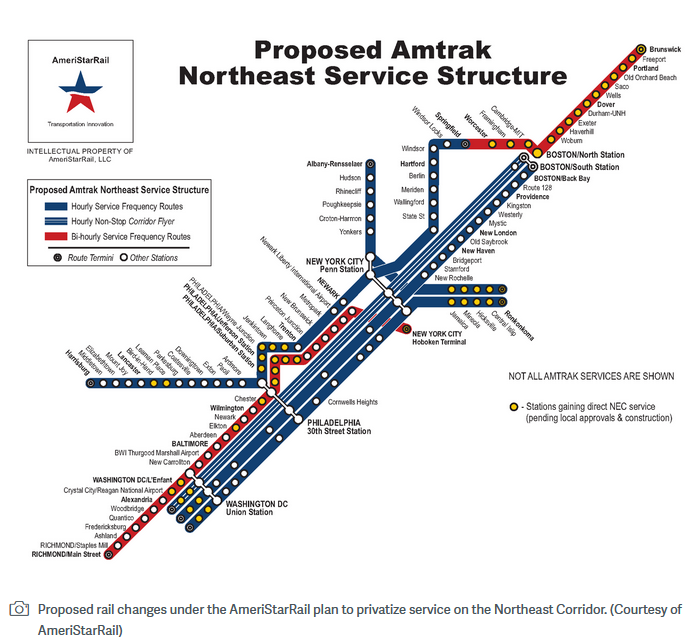
- $22 billion would be provided as grants to Amtrak
- $24 billion as federal-state partnership grants for Northeast Corridor modernization
- $12 billion for partnership grants for intercity rail service, including high-speed rail
- $5 billion for rail improvement and safety grants
- $3 billion for grade crossing safety improvements
$65 Billion for High-Speed Internet
This money will be used to provide high speed internet access in unsupported areas of the country. Initiatives will primarily focus on rural areas where internet providers are limited or non-existent. There will also be equity initiatives included here as well such as the 'Digital Equity Act', which forces providers to offer low-cost affordable plans, and implementing policies to end digital redlining.
$65 Billion for Energy Infrastructure
Funding from this bill will help with rebuilding our electrical grid. There are growing fears of the resilience of our power grid recently, partially due to the summer power outages in Texas and other parts of the country. There are also concerns of deprecated technology still being used which may leave the U.S. vulnerable to cyber attacks and terrorism.
For clean energy initiatives, funding will go towards building thousands of miles of new transmission lines for renewable energy. Money will also be used to create a new 'Grid Deployment Authority' for research and development of alternative energy sources.
$63 Billion for Water Infrastructure & Clean Drinking Water
As stated by the White House, “Up to 10 million American households and 400,000 schools and child care centers lack safe drinking water”. This is why the majority of funding for water infrastructure will be allocated towards providing clean drinking water across the U.S.
- $30 billion to provide clean drinking water in rural, low-income, and tribal communities.
- $15 billion to replace all lead service lines
- $10 billion for chemical cleanup - PFAS per- and polyfluoroalkyl
- $8 billion for combating western droughts via water treatment, storage, and reuse facilities.
$50 Billion for Disaster Recovery
This money will be used to maintain and protect critical infrastructure from cybersecurity attacks. This will mainly apply towards our power and water infrastructure. Funding will also be provided to help address the growing issues of flooding, wildfires, coastal erosion, and droughts that have plagued several parts of the U.S.
$42 Billion for Airports, Ports, and Waterways
Money will be allocated towards funding various ports and waterways. Most of which will be used for maintenance and repairs. Along with the current administrations initiative for clean energy, money will also be used to reduce emissions and drive electrification / low-carbon technologies within these industries.
- $25 billion will go towards airports. Of this amount, air traffic control towers and systems will be receiving $5 billion for upgrades. This is separate from the COVID-19 relief this industry received in 2020.
- $17 billion will go towards ports and waterways. Most of this money will go to the Army Corps of Engineers for port infrastructure. The rest of the funds will go to the Coast Guard, and ferry terminals.
$39 Billion for Public Transit
Money here will be used to improve public transit systems nationwide. This will address the current maintenance backlogs for repairs, as well as providing money to create more efficient bus routes. Funding will also go towards initiatives to make public transit more accessible to seniors and disabled citizens.
$21 Billion for Environmental Remediation
“The bill includes funds to clean up superfund and brownfield sites, reclaim abandoned mine land and cap orphaned gas wells”, according to the White House. The rationale for this is that these sites remain a constant source of pollution and blight within the surrounding communities.
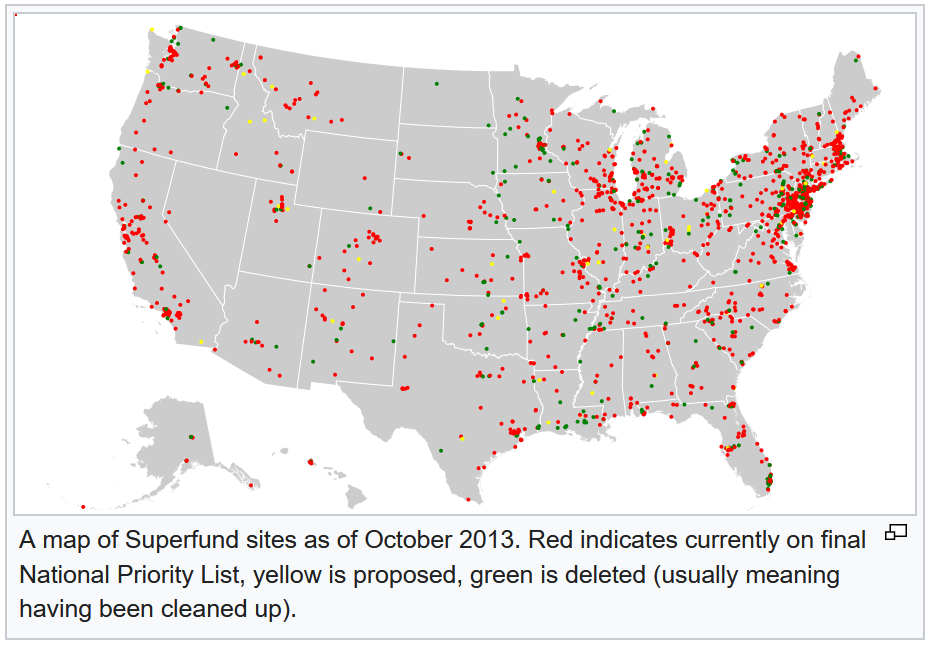
$15 Billion for Electric Transportation Infrastructure
Funding will be used to help facilitate electrical transportation across the country via electrical cars, buses, and ferries. Half of the funding will go towards investments within the EV (electric vehicle) market, while the other half will go towards reducing the emissions of buses and other public transit.
- $7.5 billion for creating the infrastructure of nation-wide electrical charging stations for electric vehichles
- $5 billion for creating low-to-zero low emission buses
- $2.5 billion for creating zero emission ferries
$11 Billion for Improving Road Safety
Appropriations here will be used to improve general road safety within states and localities. The stated goal is to reduce the number of crashes and fatalities, especially for pedestrians and cyclists. The White House states that the U.S. has some of the highest road fatalities in the industrialized world, but this doesn't apply when compared to all countries, including the third world.
$1 Billion for Reconnecting Communities
The last provision here will go towards reconnecting communities that were separated by large infrastructure projects in the past. The Biden administration is making the claim that a dispraportionate amount of black communities were divided by these projects. Homes and businesses were bulldozed for the creation of highways and other large infrastrature projects. This resulted in the displacement of these residents and the separation of existing communities. Funding will be used to redesign and rebuild these impacted city grids.
Historical Trends for Infrastructure Spending
Now that we know exactly what's inside this infrastructure bill, the next thing to do is understand how this future spending compares to previous years.
The most well documented data on U.S. infrastructure spending goes back to 2017 from the congressional budget office. These trends seem to have stayed relatively the same till March 2020 during the start of the global pandemic. The data points mentioned below will be used based on this historical data.
- Within the last five years, the U.S. spent, on average $450-$500 billion dollars on infrastructure annually. This number has gradually increased year over year (Figure 1).
- Highways are the most funded piece of U.S. infrastructure historically, followed by water utilities and mass transit. This correlates with the spending allocations in the newest infrastructure bill (Figure 2).
- State and local governments spend significantly more money on infrastructure compared to the federal government; typically 3x the amount. They also are paying for the majority of operational and maintenance costs for established infrastructure, as opposed to funding new projects via capital investment (Figure 1 + 3).
- Federal spending on infrastructure primarily consists of issuing bonds and grants to state and local governments. The rest of the capital is used directly to fund large-scale infrastructure projects via the Army Corps of Engineers.
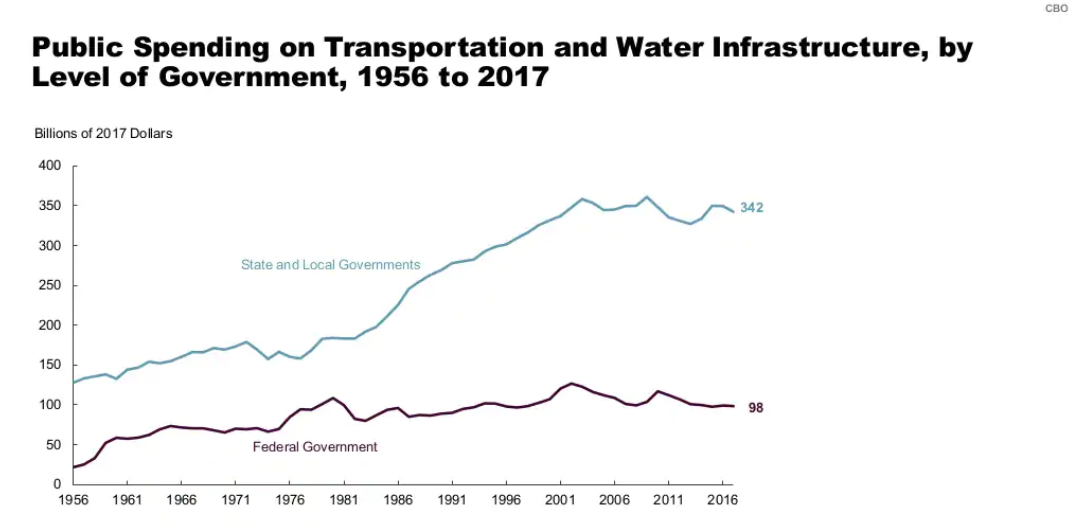

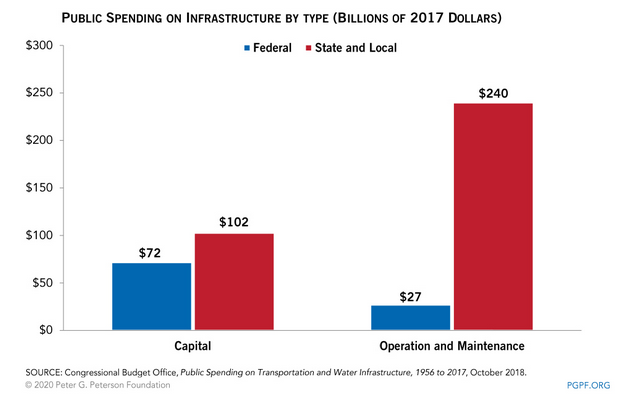
Risk/Benefit Analysis of the Infrastructure Bill
Now that we have all of the data, the best way to wrap up our understanding of this bill is to go over the risks and benefits of it in relation to the impact it will have across the country.
Speculative Benefits
The main benefit of this massive infrastructure bill is that we actually need it. Currently, the U.S. received a C- rating on the "2021 Report Card for America’s Infrastructure" by the ASCE (American Society of Civil Engineers). Despite making small progress over the last 20 years, a C- is still an abysmal rating.
Infrastructure such as mass transit and roads received a D-, which is a rating boarding 'unfit for service'. Categories such as aviation, dams, hazardous waste, inland waterways, levees, parks, roads, schools, storm water, and waste water also received a rating of D. Bridge infrastructure was also on the decline from the last report in 2017.
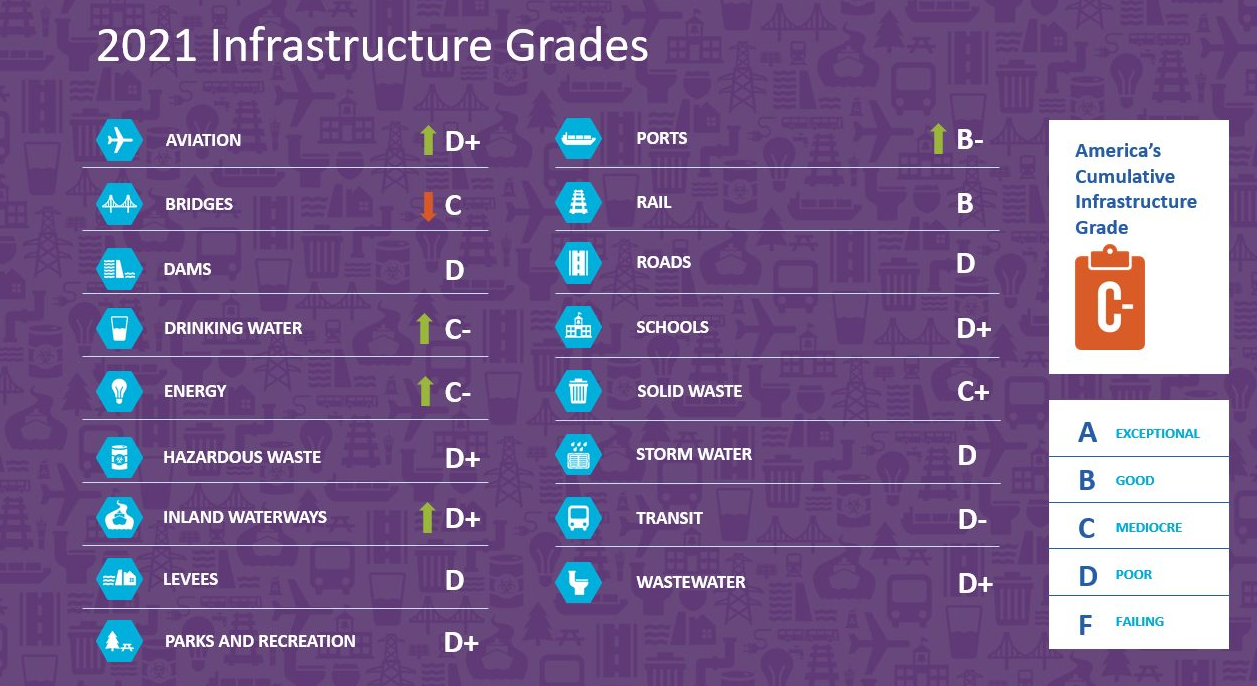
Another potential benefit of this bill passing is that it might be a sign that both parties in congress can actually get things done while working together. This might be a pipe dream, but the vote distribution between democrats and republicans showed glimpses of bipartisanship, as opposed to the usual party shenanigans. The initial vote in the senate was 69-30 in favor of the bill which showed that some moderate republicans are willing to support these liberal initiatives if a certain level of compromise is achieved. In the house of representatives, the vote was 228-206. 13 republicans voted for this bill, however this isn't surprising as 6 of these reps are in NY and NJ where infrastructure might as well be non-existent.
Speculative Risks
The main criticism of this bill is its extraordinary cost. The bill currently stands at a cumulative total of $1.2 trillion dollars. It's hard to contextualize a billion dollars, let alone a trillion, so this price tag isn’t anything to scoff at. This bill is officially the largest infrastructure initiative in recent history. Several funding records have been broken in almost all aspects of U.S. infrastructure as well. All of this is after the fact that the initial bill proposed by the Biden administration was over $3 trillion dollars. Improving critical infrastructure is generally a good thing, but it’s important to take a step back to review the financial health of this country as well.
Estimates calculated by the Congressional Budget Office, over the course of the 2021-2031 period, indicate that passing H.R. 3684 would "Add $256 billion to projected deficits over that period". This figure is derived from other estimates indicating an increase in discretionary spending by $415 billion, while also projecting a decrease in direct spending by $110 billion, and an increase in revenues by $50 billion overall. This 256 billion dollar increase could pose a risk considering the current state of our national debt.
The national debt in the U.S. is currently sitting around 29.6 trillion dollars. This is the highest the national debt has been in history and there are no apparent signs of things slowing down anytime soon. Some may argue that the national debt doesn’t matter, but this only applies after factoring in the federal debt to gross domestic product ratio. For example, if the country's GDP was 100 trillion dollars, then a national debt of 29.6 trillion would be pretty insignificant as the country wouldn't be heavily leveraged. However, this isn’t the reality of the U.S. today. The GDP of the U.S. in Q3 2021 was roughly around 23.2 trillion. Currently, we are producing less than the amount of debts we owe. This doesn't factor in total assets, but it puts the U.S at risk as investors might lose confidence in the U.S. ability to pay off their debts to bond holders.
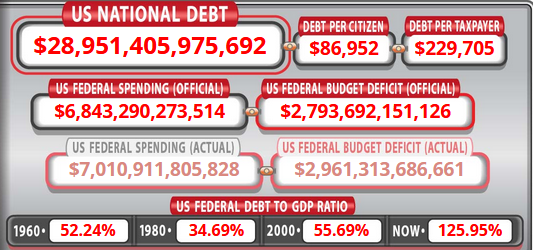
There is also a legitimate risk of the U.S. eventually defaulting on some of their loans. The debt ceiling was recently raised on October 14th to avoid the first ever federal default. The recent increase was just a temporary fix as this increase will only help stave off this issue until early December next month. Some see this as the government kicking the can down the road, and avoiding a blaring issues with the economy. These same people also believe that the trend of hyper-liberal spending in this environment isn’t the best idea, and would prefer if tasks like re-balancing the budget would be prioritized instead.
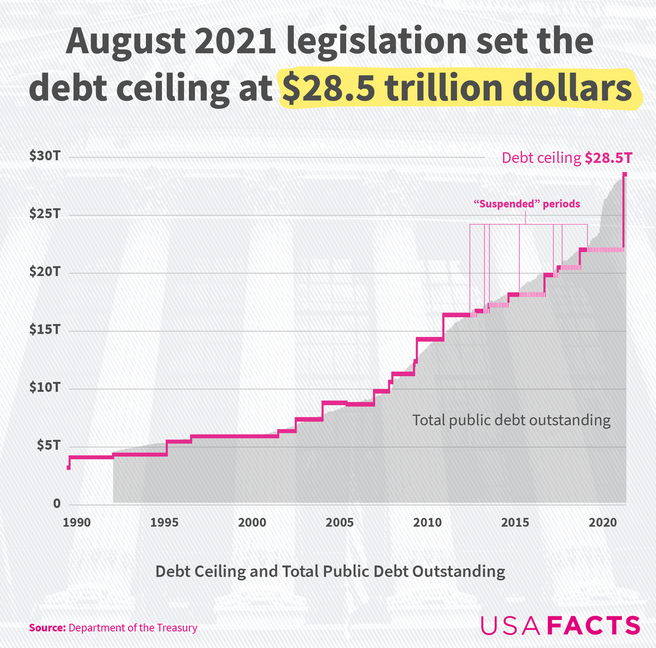
Sources
Expenditure Breakdown and Analysis
- https://www.whitehouse.gov/briefing-room/statements-releases/2021/07/28/fact-sheet-historic-bipartisan-infrastructure-deal/
- https://usafacts.org/state-of-the-union/transportation-infrastructure/
- https://whyy.org/articles/expanded-train-lines-in-30-cities-and-towns-ameristarrail-wants-to-privatize-amtrak-service-on-northeast-corridor/
Historical Trends for Infrastructure Spending
- https://www.cbo.gov/publication/54539
- https://www.pgpf.org/blog/2020/06/state-and-local-infrastructure-spending-a-closer-look
Risks/Benefits Analysis of the Infrastructure Bill